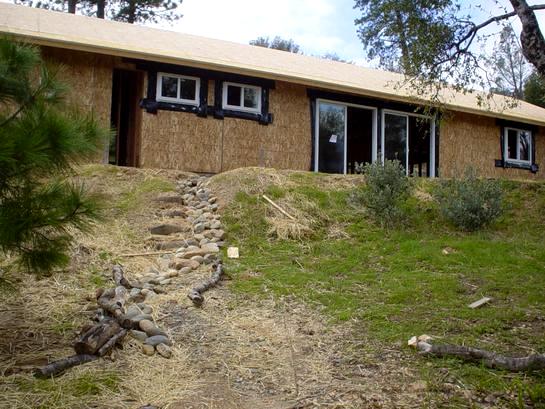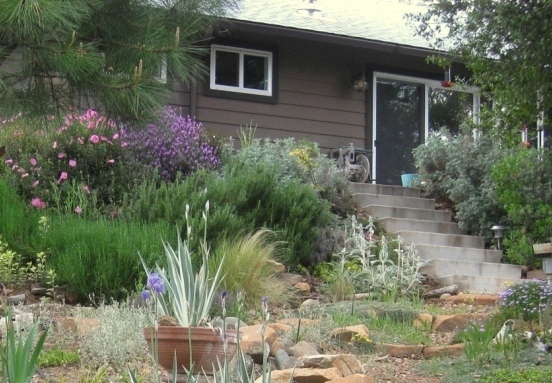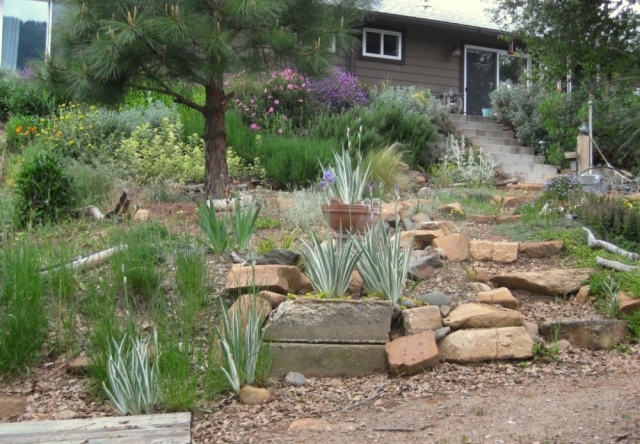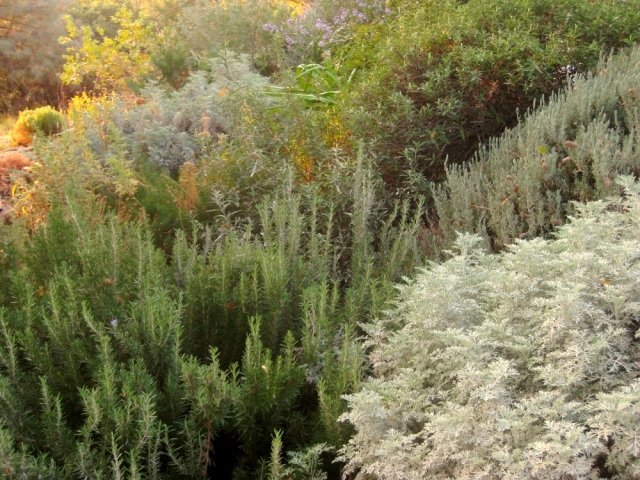The back slope, then and now
In a series of Then and Now photos, it’s satisfying to look back nostalgically to see how far we have come. Bought in 2000, and in a completely natural area, we’ve tried to preserve the beauty of our 7 acres near the Sierra foothills of California, as we make a place for ourselves in this beautiful spot. The house was started in February 2004 and finished in December 2005, lived three months in a trailer here and the garden was started in earnest in 2006.
In cutting the house pad, a method called cut and fill was used on our 15 degree slope. This is the ‘down’ side at the ‘back’ of the house, but where all the windows are placed to take advantage of the view looking east.
A downspout was fitted between the two small windows and a drain was installed going down the hill to what I eventually would call my rain garden. The idea was that the extra moisture from any rain, especially summer rain, would flow to this area and allow me to grow a wider variety of plants needing that moisture.
Looking at this picture for the rain garden post yesterday reminded me of the progress made on the plantings done to maintain the slope.
This is what I planted in 2006:
Lavender, rockrose, thyme, euphorbia, santolina, lamb’s ears, artemisa, Jerusalem sage, iris, and a rose. Existing there already were of a few of the Sticky Whiteleaf Manzanita, M. viscida, our native manzanita that grow wild here.
Here, five years later in 2012, are steps leading down from the stamped-concrete patio leading to a path with rock steps. The plants on the slope have every color of greenery so even in the off season there is interest and texture.
In the wider view, the growth of the pine is striking,…it’s grown from a 6 foot to a 30 foot tree. Rocks rescued from the septic digging, at great risk (to me, dodging the backhoe) were used to construct the steps. Alongside were enough rocks to line a shallow trench to direct water downhill. The concrete ‘blocks’ were found by a dumpster, snagged with seemingly no embarrassment, and I like the grotto look of them at the end.
Planted to the left of the path are Variegated Sweet iris, Iris pallida, Common iris, Pincushion flower (Scabiosa columbaria,) Snow-in-summer (Cerastium tomentosum,) and California fescue.
To the right of the path is Ajuga, Swan River daisy (Brachycome) and White sedum, (S. album clusianum.) On the path itself is creeping thyme.
The slope in off season still has plenty of color and texture.





6 comments